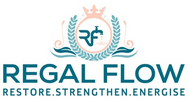
Reverse Osmosis Explained: Stages, Systems & How to Choose the Right RO Filter
Ever wondered why plants sip water like pros while your filter groans under pressure? The bottom line is that osmosis is natural, but reverse osmosis is built for the heavy lifting of purification. For those who want to examine the underlying science, our In-Depth Insights into Reverse Osmosis Systems and Applications is the perfect starting point, but stay right here as we reveal where each method shines in your daily life
What is Reverse Osmosis?
Definition and Basic Principles
Imagine trying to make a cup of tea in a caravan with questionable tap water. It tastes off, smells a bit funny, and you’re suddenly Googling “how to clean drinking water”. That’s where reverse osmosis (RO) comes in. In essence, reverse osmosis is a clever filtration method. It pushes water through a super-fine membrane to remove impurities—think of it as giving your water a spa day. It's the opposite of natural osmosis, where water flows freely to balance salt or chemical levels. With RO, we apply pressure to get ultra-clean water out the other side. It’s controlled, efficient, and works a treat in both homes and businesses.
Importance of Stages in Reverse Osmosis Systems
Role of Multi-Stage Filtration
If you have ever cleaned a muddy dog, you'll know one rinse doesn’t cut it. You need a process; soap, scrub, rinse, repeat. The same logic applies to water. Reverse osmosis systems use multiple stages to clean your water step by step. One stage might tackle grit and sand, another takes on chlorine, and another removes microscopic nasties like lead or bacteria. Each filter plays its part. Together, they deliver crisp, clean water from even the most stubborn supply.
Common Reverse Osmosis System Configurations
3-Stage Reverse Osmosis Systems
Components and Functions
A 3-stage system is like the starter pack for clean water.
-
Stage 1: Sediment filter – catches dirt, sand, and rusty particles.
-
Stage 2: Carbon filter – removes chlorine and odours.
-
Stage 3: RO membrane – filters out dissolved solids and harmful contaminants.
It’s simple and effective—ideal if your tap water is already decent and you just want extra reassurance.
4-Stage Reverse Osmosis Systems
Components and Functions
Now we’re talking polish.
A 4-stage system includes the same first three stages, with a bonus:
-
Stage 4: Post-carbon filter – this final touch improves taste and removes any lingering smell.
It’s perfect for tea lovers and coffee connoisseurs who can taste the difference. You’ll notice your kettle needs less descaling too.
5-Stage Reverse Osmosis Systems
Components and Functions
A 5-stage system steps things up for homes in older buildings or cities with heavy chlorination.
-
Two carbon filters – double down on chemical removal.
-
One sediment filter – keeps the bigger bits at bay.
-
RO membrane – does the heavy lifting on fine particles.
-
Post-carbon filter – gives the final polish for taste and smell.
If your water tastes odd or your pipes are ancient, this is a solid choice.
6-Stage and Beyond Reverse Osmosis Systems
Additional Features and Enhancements
Here’s where things get fancy.
Beyond the basics, some systems add:
-
Remineralisation filters – put healthy minerals (like calcium and magnesium) back in.
-
UV filters – zap bacteria and viruses with light.
-
Alkaline filters – adjust pH for a smoother taste.
Ideal for families with sensitive stomachs or anyone using well water. You’re not just getting clean water—you’re getting tailored hydration.
Factors Influencing the Number of Stages
Water Quality and Contaminant Levels
Here’s the deal: not all water is created equal. If you live in a hard water area like Kent or Essex, your tap might be full of limescale. If you’re using a private well in the countryside, you might be dealing with bacteria or iron. The worse your water, the more filtration stages you’ll want. Local water reports (often free online) can show you what you’re up against. A quick look could save you from overbuying—or under-filtering.
Choosing the Right Reverse Osmosis System for Your Needs
Assessing Household Requirements
Choosing the right RO system is a bit like buying a car—you need one that fits your lifestyle.
Ask yourself:
-
How many people live in your home?
-
Do you cook a lot with tap water?
-
Does your area have specific water quality issues?
Small flats might only need a 3- or 4-stage system tucked under the sink. Larger households or anyone fussy about taste may go for 5 or 6 stages. Also think about maintenance. Can you handle changing filters every six months? Some newer systems even alert you when it’s time.
Conclusion
Summary of Reverse Osmosis Stages and Selection Considerations
Let’s recap.
-
3-stage systems are great for general filtration.
-
4-stage adds a polishing touch for better taste.
-
5-stage systems are perfect for homes with old pipes or poor municipal water.
-
6-stage and beyond offer premium features for those who want the best water possible.
The key is understanding your water and your household. With the right setup, you’ll enjoy clearer tea, tastier cooking, and less limescale all around. Clean water isn’t just a luxury—it’s a daily essential. Make your choice count.
More Reverse Osmosis info we think you'll love
Reverse Osmosis and Osmosis Difference
Reverse Osmosis and Ultrafiltration
Reverse Osmosis and UV Water Filter
Reverse Osmosis vs Ultrafiltration
Reverse Osmosis vs Deionized Water
Reverse Osmosis vs Gravity Filter
Reverse Osmosis vs Hydrogen Water
Can Reverse Osmosis Remove Microplastics?
Reverse Osmosis Water Treatment Plant


Leave a comment